
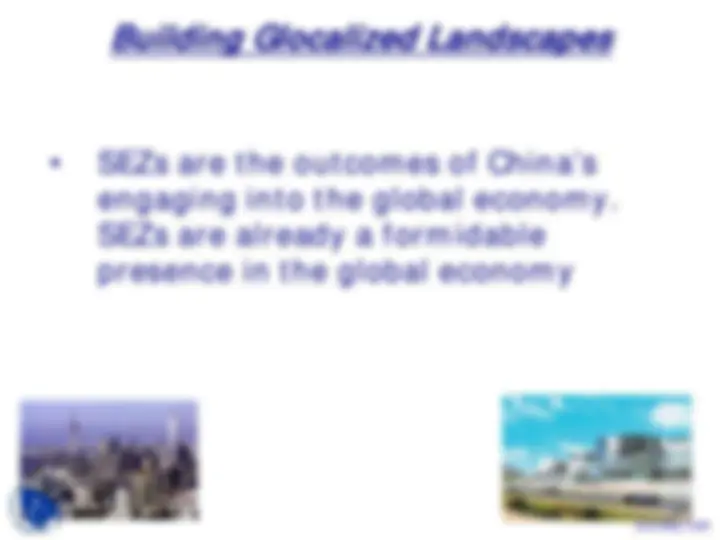
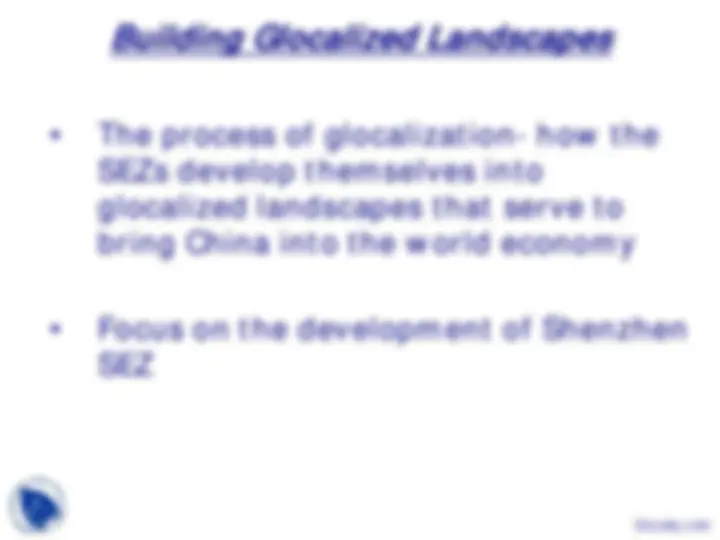
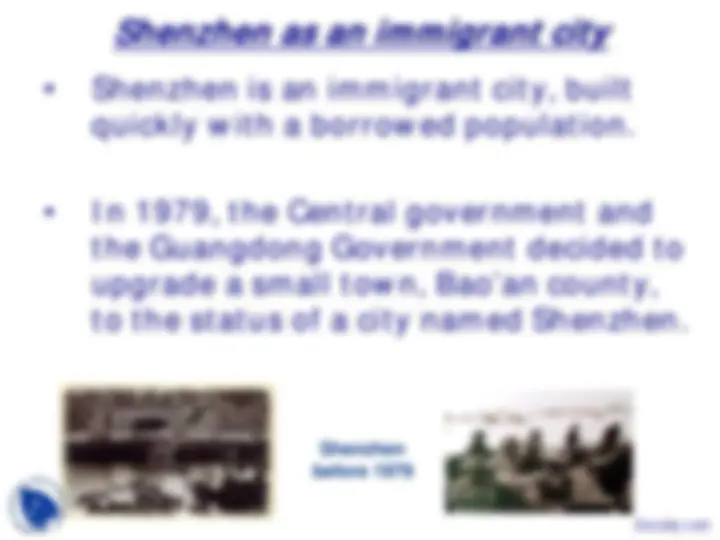
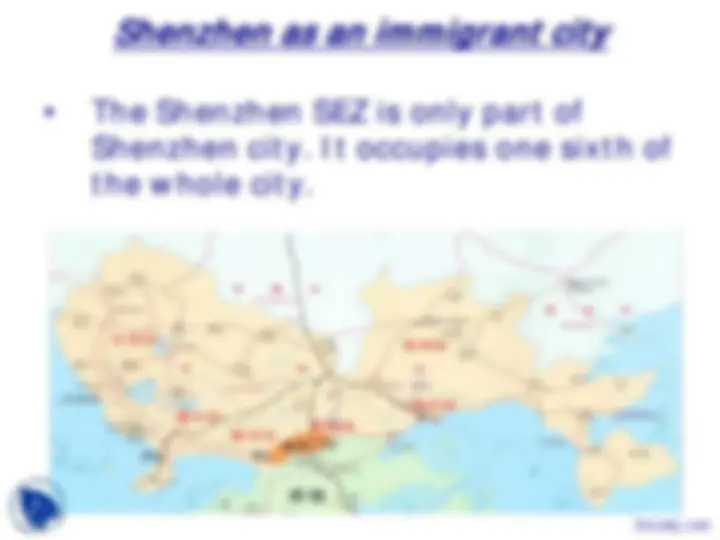
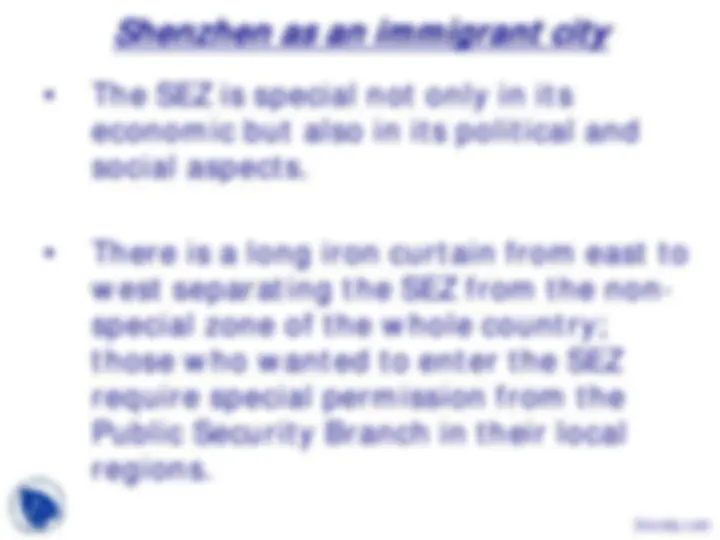
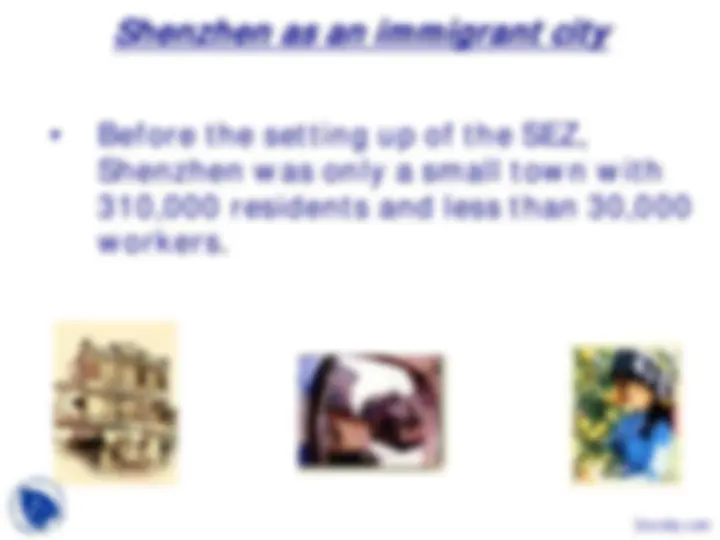
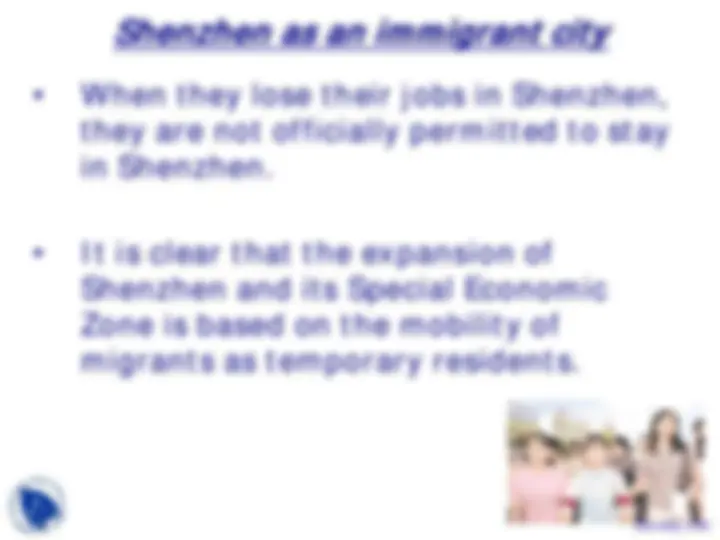
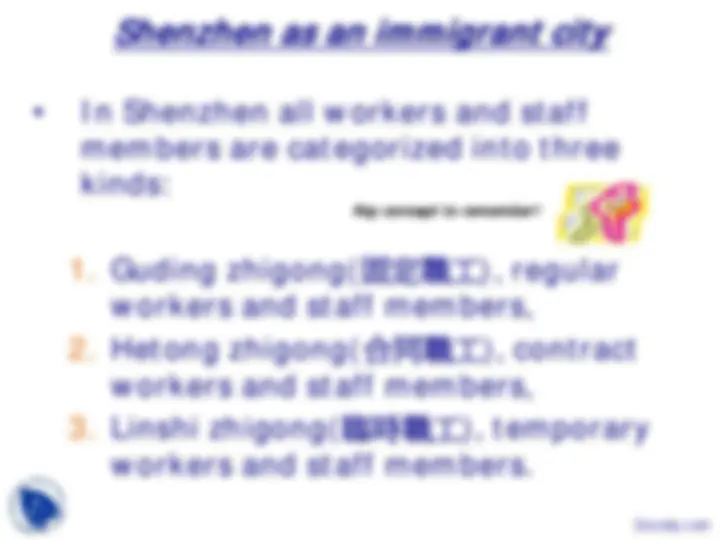
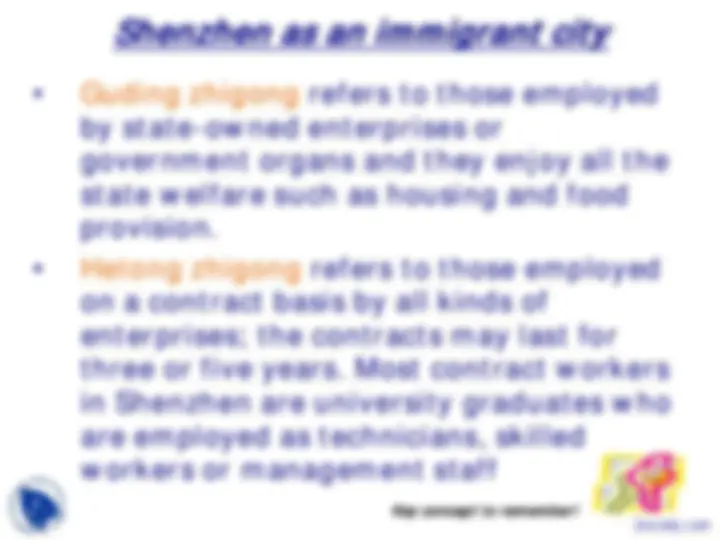
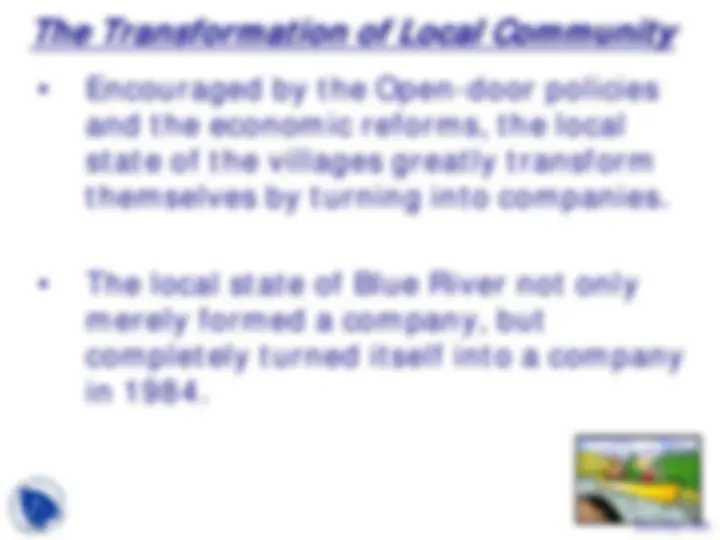
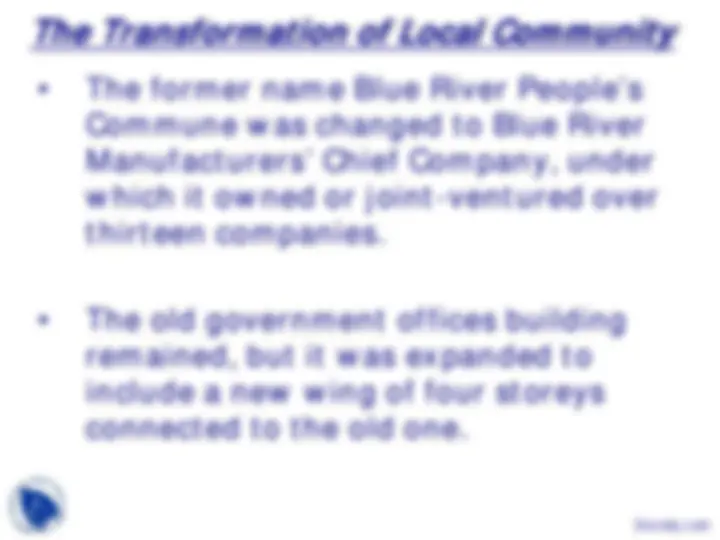
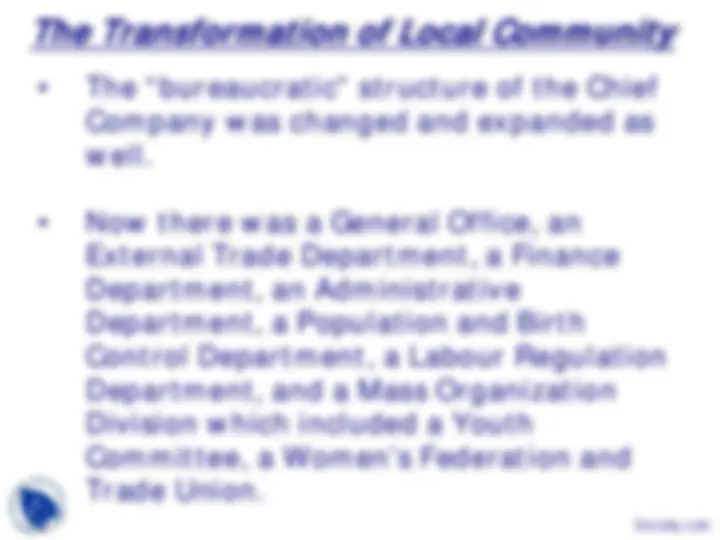
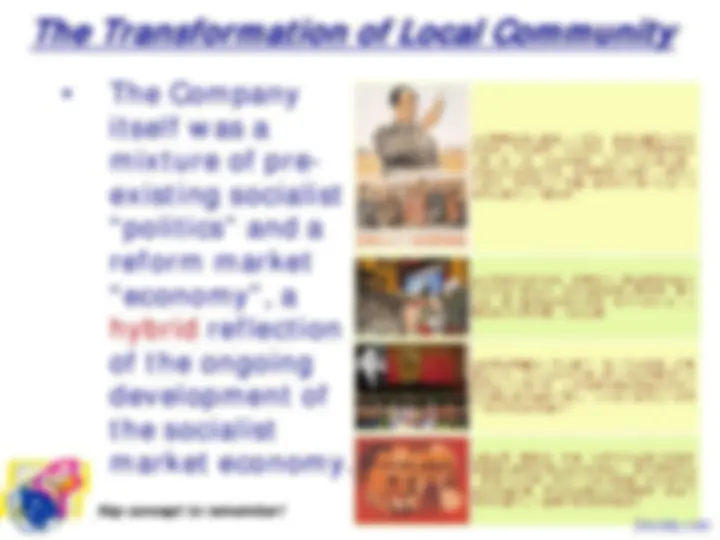
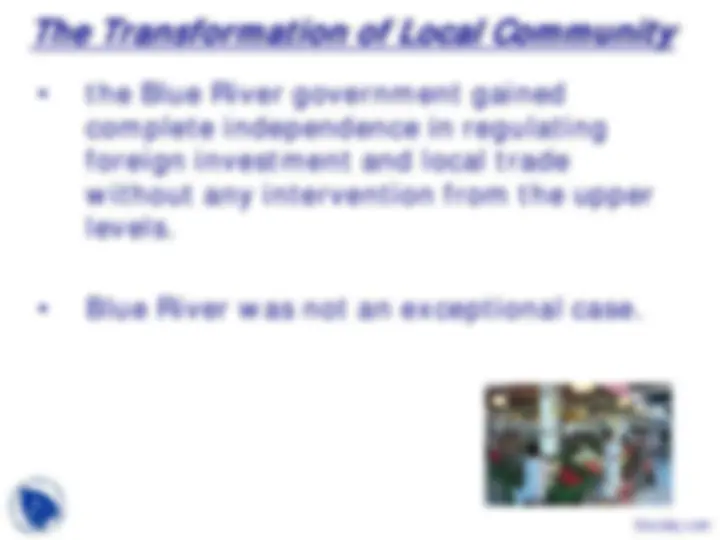
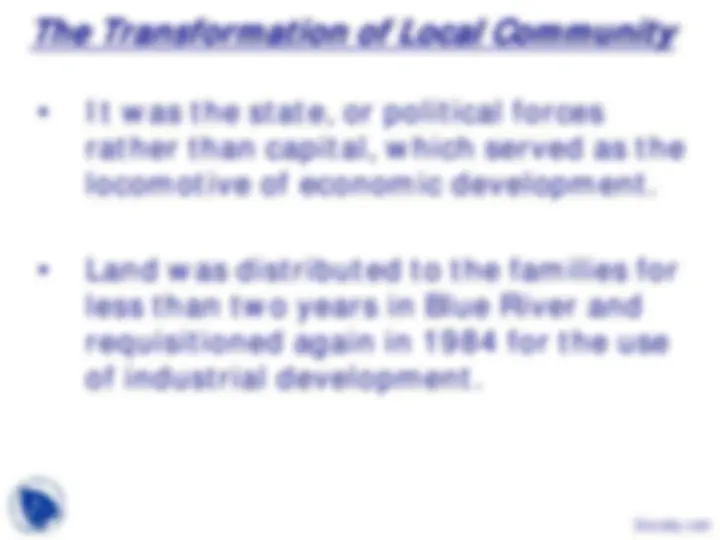
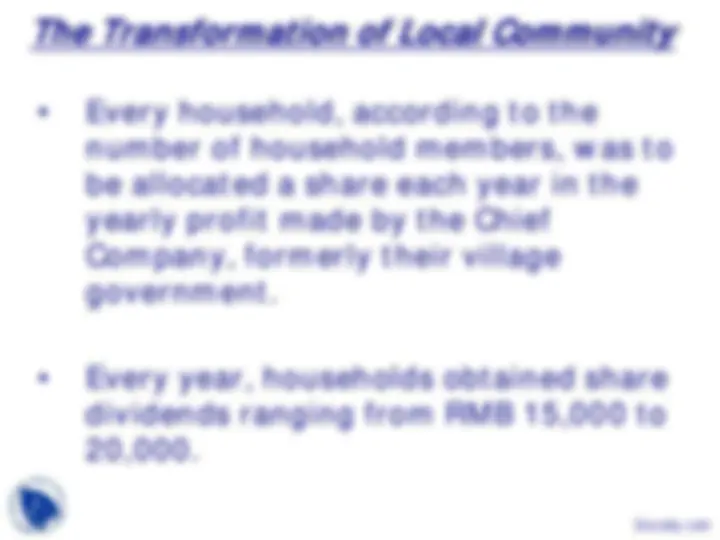
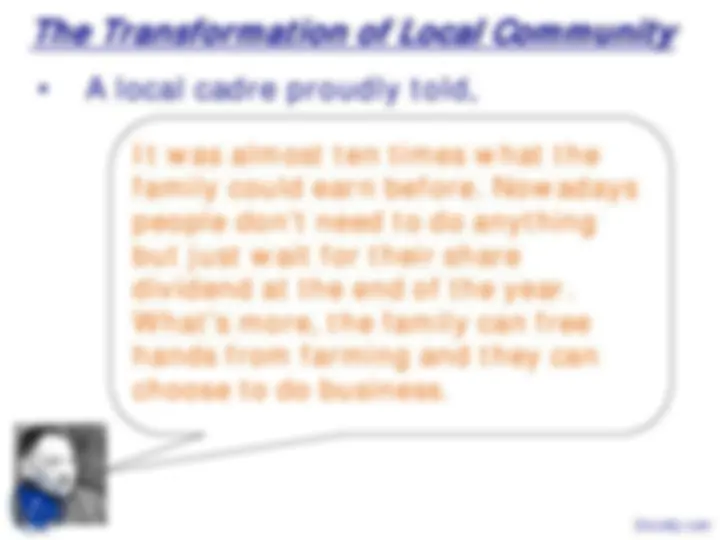
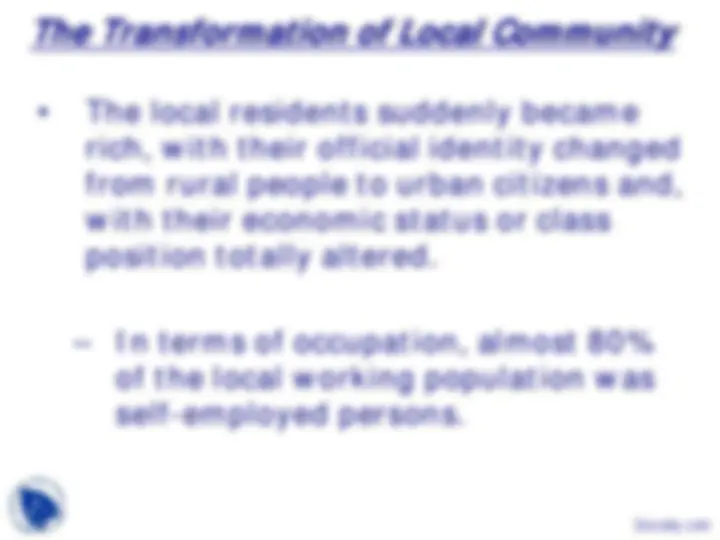
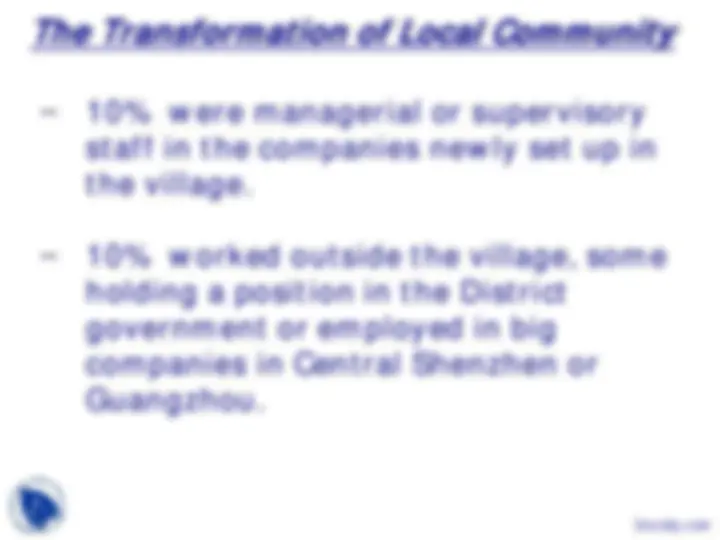
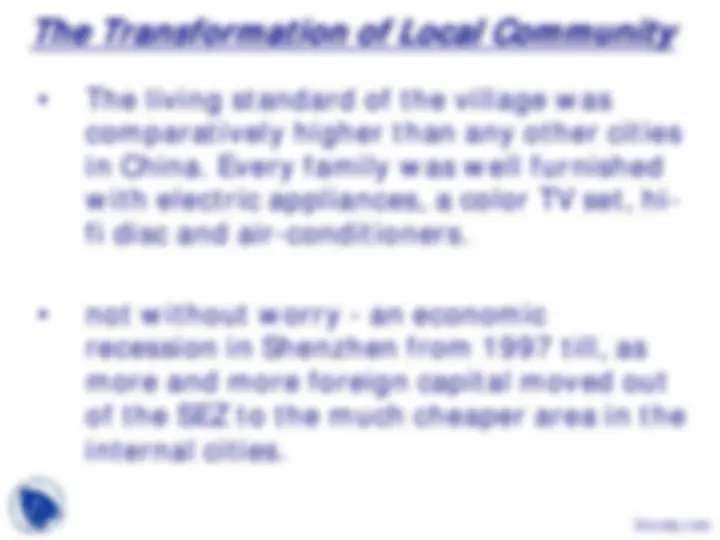
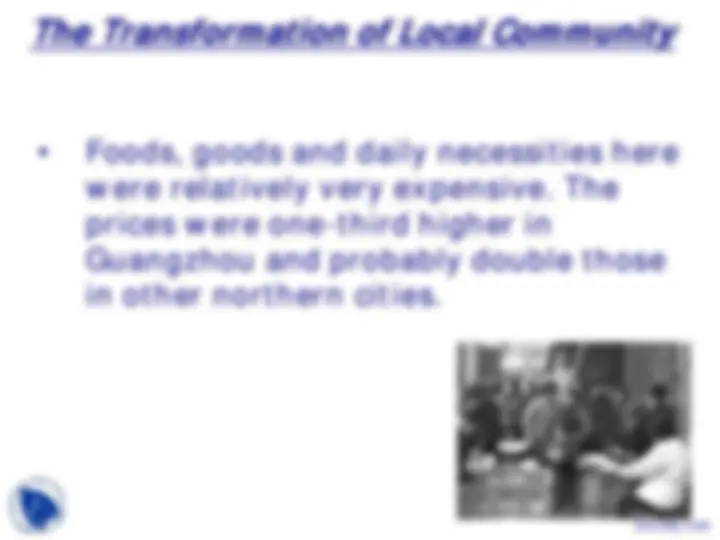
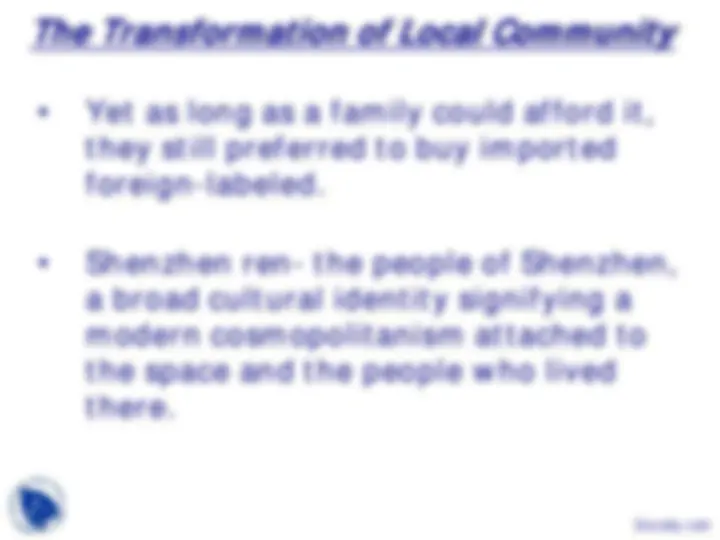
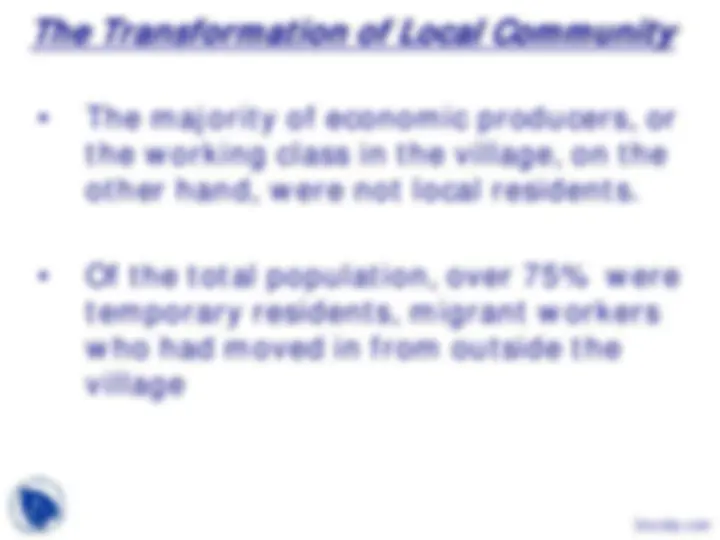
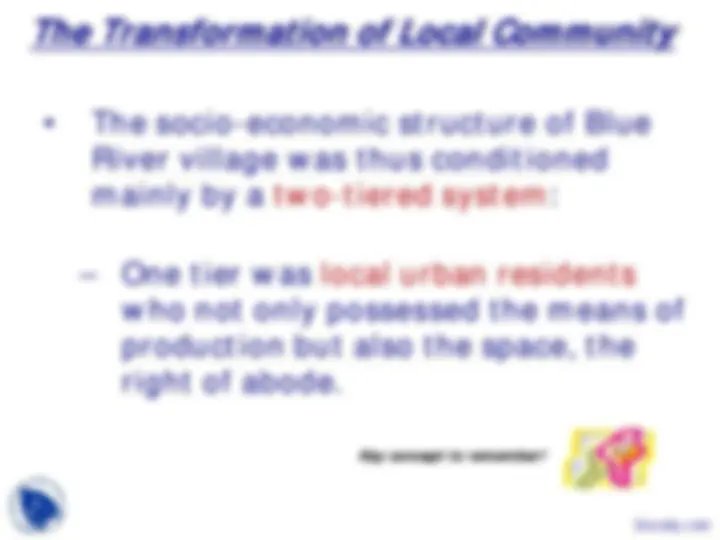
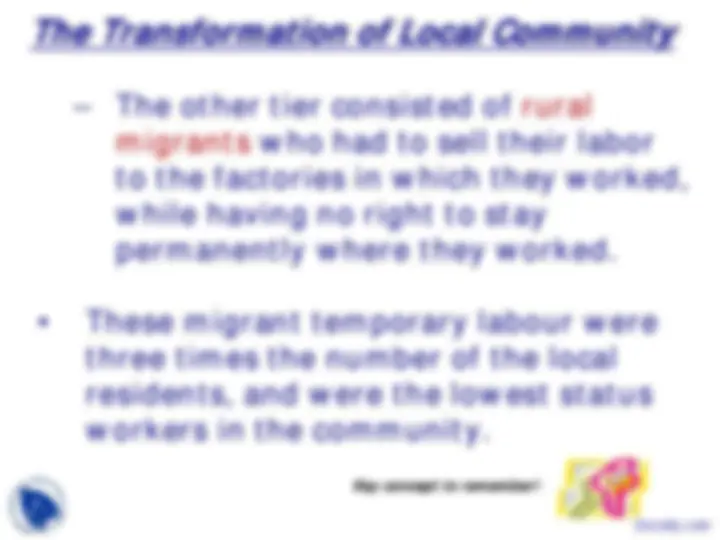
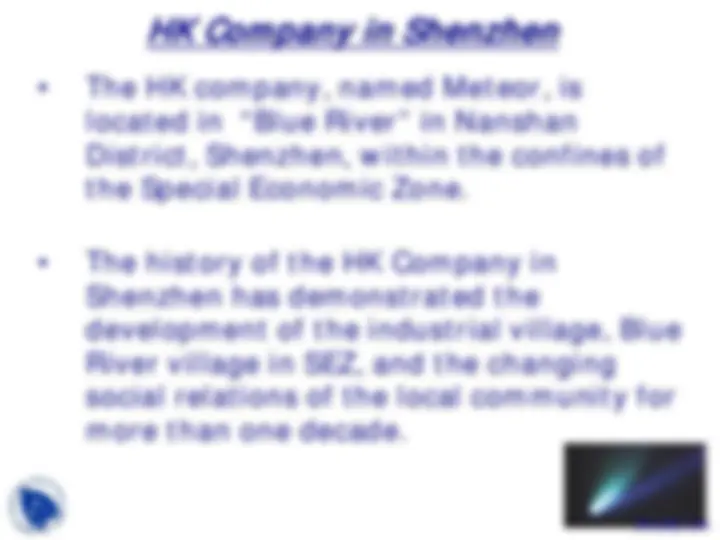
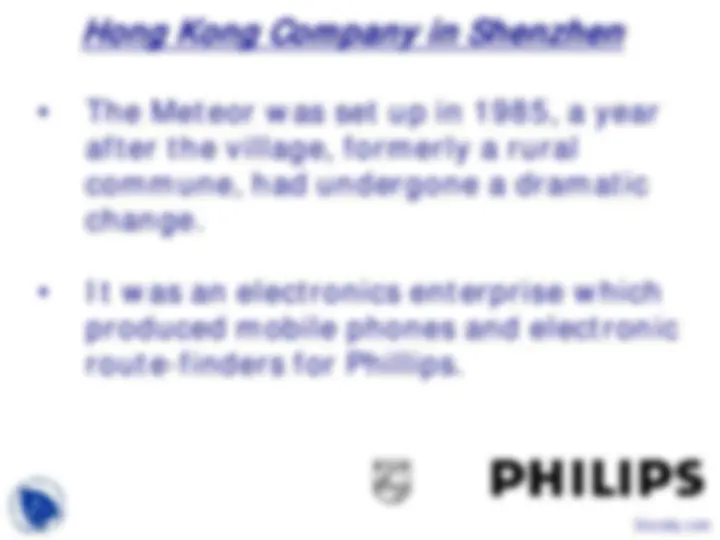
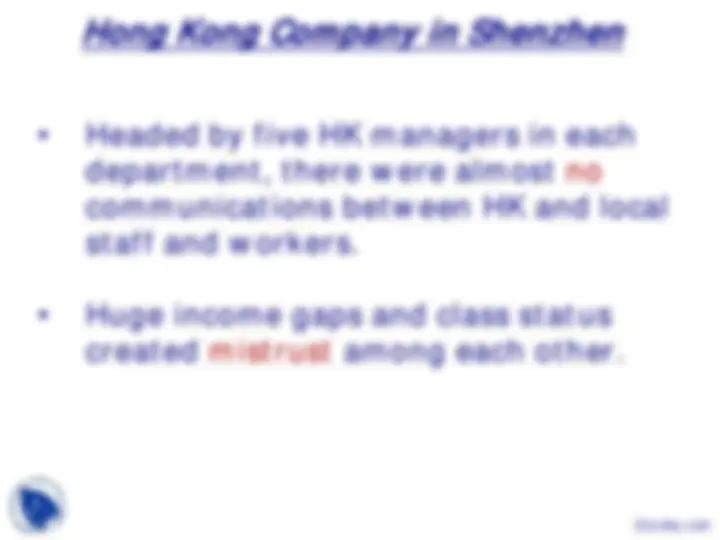
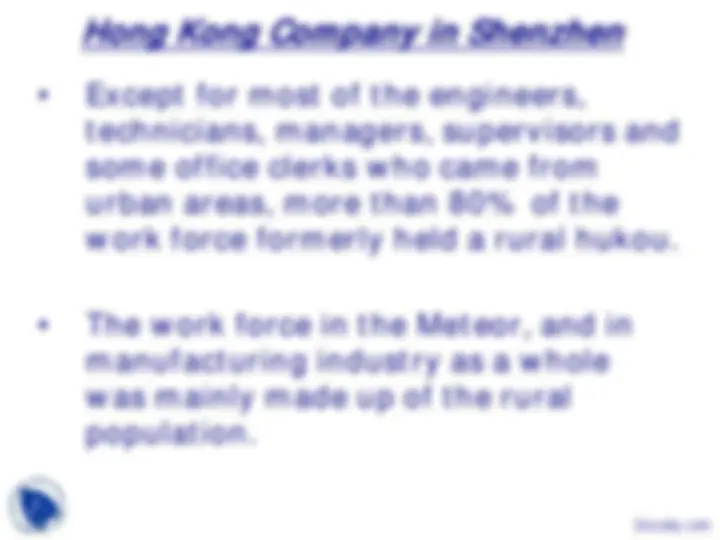



Study with the several resources on Docsity

Earn points by helping other students or get them with a premium plan


Prepare for your exams
Study with the several resources on Docsity

Earn points to download
Earn points by helping other students or get them with a premium plan
Community
Ask the community for help and clear up your study doubts
Discover the best universities in your country according to Docsity users
Free resources
Download our free guides on studying techniques, anxiety management strategies, and thesis advice from Docsity tutors
The development of shenzhen as an immigrant city and a globalized landscape in china's special economic zones (sezs). How sezs, such as shenzhen, have become formidable presences in the global economy through the process of glocalization. The document also focuses on the transformation of shenzhen from a small town to a bustling metropolis, with a particular emphasis on the experiences of temporary residents and the role of local communities in the economic development.
Typology: Slides
1 / 38

This page cannot be seen from the preview
Don't miss anything!































Globalization and China:
Shenzhen
Questions:
Theme:
Shenzhen before 1979
K ey concept to rem em ber!
K ey concept to rem em ber!